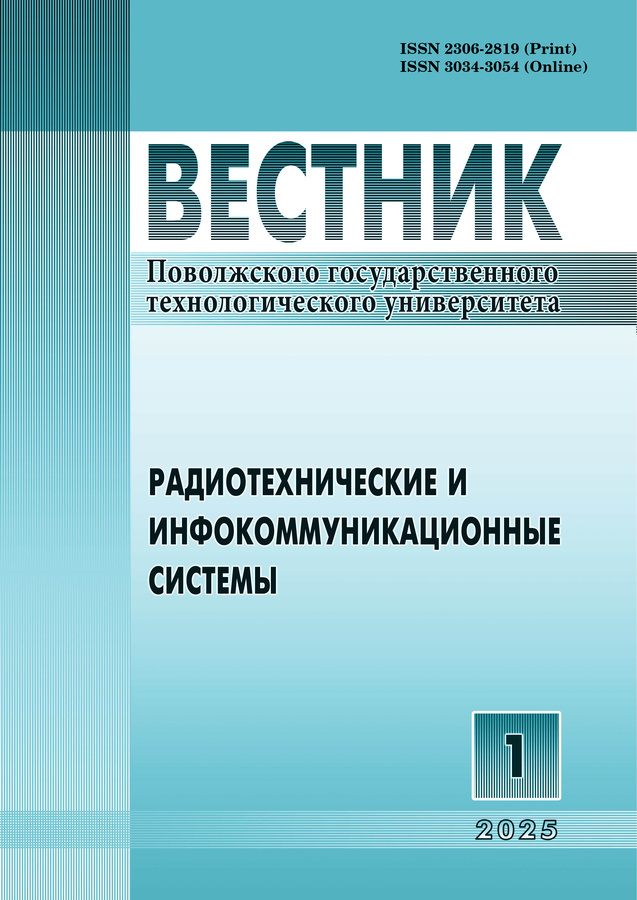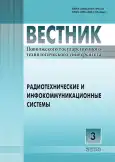Подход к оптимизации контроля достоверности радиолокационных измерений на основе интервальной оценки с помощью доверительной вероятности
- Авторы: Пантелеев Г.Д.1, Корженевский С.С.1, Куприянов Н.А.2
-
Учреждения:
- Военно-космическая академия имени А.Ф.Можайского
- Краснодарское высшее военное авиационное училище лётчиков
- Выпуск: № 3 (2024)
- Страницы: 6-14
- Раздел: ТЕЛЕКОММУНИКАЦИИ И РАДИОТЕХНИКА
- URL: https://journal-vniispk.ru/2306-2819/article/view/276325
- DOI: https://doi.org/10.25686/2306-2819.2024.3.6
- EDN: https://elibrary.ru/WOCONM
- ID: 276325
Цитировать
Полный текст
Аннотация
Эффективность функционирования радиолокационной системы зависит как от надёжности самой системы, так и от достоверности выходных измерений. При контроле достоверности измерений задание численных значений коэффициентов ложной тревоги и пропуска недостоверных измерений не представляется возможным, так как сложно сопоставить эффект от пропуска недопустимой погрешности измерения с затратами, связанными с ликвидацией последствий, вызванных ложной тревогой. Это предопределило необходимость разработки подхода к оптимизации контроля достоверности радиолокационных измерений на основе интервальной оценки с помощью доверительной вероятности. При разработке были учтены предельный из возможных диапазон возникновения недостоверных измерений радиолокационной системы, граничные (по результатам моделирования) дисперсии шума и используемые при расчётах технических систем достоверности измерений: 0,9 либо 0,95.
Ключевые слова
Полный текст
Об авторах
Георгий Дмитриевич Пантелеев
Военно-космическая академия имени А.Ф.Можайского
Email: sektor-ussr@rambler.ru
SPIN-код: 2135-3061
доцент, преподаватель кафедры космической радиолокации и радионавигации. Область научных интересов – радиолокационные системы, радионавигационные системы и комплексы, информационно-измерительные системы. Автор 46 научных публикаций
Россия, 197198, Санкт-Петербург, ул. Ждановская, 13Сергей Станиславович Корженевский
Военно-космическая академия имени А.Ф.Можайского
Email: sektor-ussr@rambler.ru
SPIN-код: 4692-1788
преподаватель кафедры космической радиолокации и радионавигации. Область научных интересов – радиотехнические системы, влияние среды распространения радиоволн, информационно-измерительные и управляющие системы. Автор 27 научных публикаций.
Россия, 197198, Санкт-Петербург, ул. Ждановская, 13Николай Александрович Куприянов
Краснодарское высшее военное авиационное училище лётчиков
Автор, ответственный за переписку.
Email: sektor-ussr@rambler.ru
ORCID iD: 0000-0001-5368-2795
SPIN-код: 1989-6511
кандидат технических наук, доцент кафедры конструкции и эксплуатации авиационной техники (истребительной авиации). Область научных интересов – радиотехнические системы, влияние среды распространения радиоволн, информационно-измерительные и управляющие системы, траекторная обработка. Автор 89 научных публикаций.
Россия, 350090, Краснодар-5, ул. Дзержинского, 135Список литературы
- Поздняков А. А., Мартынов А. М., Емельянов И. П. Имитационная модель для оценки результативности функционирования информационно-измерительной системы // Авиакосмическое приборостроение. 2023. № 11. С. 22–33. doi: 10.25791/aviakosmos.11.2023.1373; EDN: JEWGWD
- Афонин И. Е., Макаренко С. И., Петров С. В. Описательная модель подсистемы радиоэлектронного подавления в составе средств воздушно-космического нападения, используемых для нарушения функционирования элементов системы воздушно-космической обороны // Системы управления, связи и безопасности. 2021. № 2. С. 76–95. doi: 10.24412/2410-9916-2021-2-76-95; EDN: GIVGTL
- Коновальцев Э. В., Линник А. П. Обоснование минимального объема выборки при малых количествах наблюдений для оценки характеристик авиационных средств поражения, оснащенных радиолокационными головками самонаведения // Воздушно-космические силы. Теория и практика. 2022. № 23. С. 43–49. EDN: QOJKOZ
- Методика расчета вероятности правильного обнаружения полезного сигнала на входе приемника радиолокационной станции в условиях непреднамеренных помех / Ф. И. Агеев, М. С. Ворона, А. А. Гусаров и др. // Радиотехника. 2020. Т. 84, № 5(10). С. 75–83. doi: 10.18127/j00338486-202005(10)-08; EDN: FRZNDJ
- Методика оценивания помехоустойчивости широкополосных сигналов в условиях воздействия активных шумовых помех / А. О. Жуков, Н. А. Куприянов, В. В. Макаренков и др. // Вопросы радиоэлектроники. Серия: Техника телевидения. 2023. № 2. С. 82–89. EDN: PHHXVH
- Куприянов Н. А., Подъячев В. В., Скоробогатов М. С. Методика оценивания потоковых характеристик радиолокационной системы слежения за космическими объектами в условиях вариаций полного электронного содержания // СПбНТОРЭС: труды ежегодной НТК. 2021. № 1 (76). С. 85–88. EDN: EFSGPE
- Куприянов Н. А., Куракин С. З., Степенко А. С. Концепция синтеза помехового канала радиолокационной системы с фазированной антенной решёткой // Наука XXI века: технологии, управление, безопасность: Материалы II национальной научной конференции, Курган, 21 апреля 2022 года. Курган: Курганский государственный университет, 2022. С. 227–232. EDN: YBAYGU
- Логунов С. В., Куприянов Н. А. Методика ранжирования каталогизированных космических объектов, используемых для повышения точности определения координат объектов радиолокационной станцией дальнего обнаружения // Вопросы радиоэлектроники. Серия: Техника телевидения. 2019. № 1. С. 75–84. EDN: ZBNECD
- Макаренков В. В., Семенов А. А., Кузнецов М. Ю. Адаптивная методика распознавания время-селективных замираний отраженных сигналов от объектов двухдиапазонным радиолокационным комплексом в условиях помехового воздействия // Вестник Новгородского государственного университета. 2020. № 5(121). С. 29–33. doi: 10.34680/2076-8052.2020.5(121).29-33; EDN: ADPFNV
- Метод косвенного контроля мощности сигналов глобальных навигационных спутниковых систем / И. В. Сахно, А. В. Назаров, Е. В. Коннов и др. // Метеорологический вестник. 2016. Т. 8, № 3. С. 39–61. EDN: XDZHRJ
Дополнительные файлы













